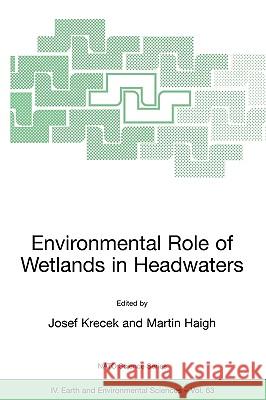Environmental Role of Wetlands in Headwaters » książka
Environmental Role of Wetlands in Headwaters
ISBN-13: 9781402042270 / Angielski / Miękka / 2006 / 347 str.
Environmental Role of Wetlands in Headwaters
ISBN-13: 9781402042270 / Angielski / Miękka / 2006 / 347 str.
(netto: 1042,40 VAT: 5%)
Najniższa cena z 30 dni: 1079,53 zł
ok. 20 dni roboczych.
Darmowa dostawa!
Internationally, the wetlands of headwater and upland regions provide many valuable environmental services. They influence flood flows, sediment loads and aquifer recharge; biochemical water qualities and biodiversity. They affect the livelihoods of many communities providing water, peat, timber, grazing, crops and, locally, aesthetic, cultural, recreational, nature conservation and educational benefits. Previously, many of these lands were valued only for their capacity to be converted to other uses through drainage and forestation. Today, their benefits are better appreciated. Better environmental management highlights ways of bringing enhanced benefits from these lands to all stakeholders and of minimising their potentially negative impacts due to climatic emissions of greenhouse gases, hydrological changes (especially flooding, water chemistry) and sediment release. This book moves towards a more comprehensive inventory of the benefits and costs of headwater wetlands. It evaluates the research that tries to understand the tolerances, exchanges, checks and balances within headwater landscapes and the downstream impacts of changes in wetlands. It employs case studies and reviews from 21 nations spanning Europe, Africa, Asia and the Americas. It explores the new policy frameworks, changes in land husbandry, new systems for community education, participatory processes and technological interventions required for the effective management of headwater wetlands and the full integration of wetlands (including newly constructed wetlands) into environmental management and planning. In the past, most research dealt with wetlands as isolated features, this book examines wetlands in their watershed management context.











